Halley VI: Dropping in on the British Antarctic Survey
- Published
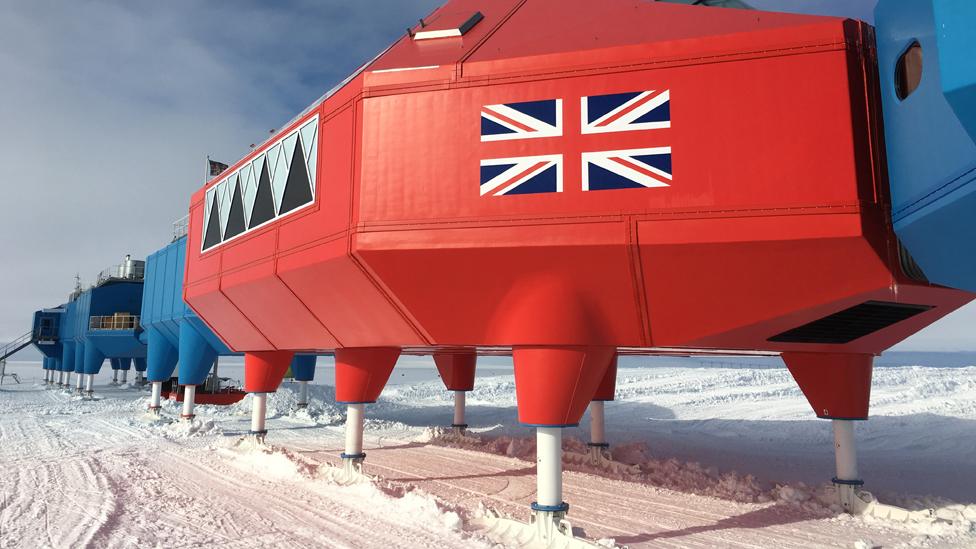
A member of the first group of journalists to visit the British Antarctic Survey's isolated Halley Research Station for almost 20 years, Matthew Teller was captivated by the landscape, the team spirit, and surprisingly even the architecture.
"Everybody who goes south is running away from something, Matthew."
Up on the bridge of the Royal Research Ship Ernest Shackleton, 2nd Mate Duncan Robb gives me a meaningful look as he delivers this slice of cynicism, and nudges a lever forward to guide the 5,000-tonne ship towards an ice floe.
With a crunch and a shudder, the strengthened hull effortlessly splits the floe, and elbows the ice aside as we plough onward through sub-zero-temperature water towards a flat horizon.
I didn't feel as though I was running away. It was more a case of being drawn inexorably back to a place I had visited, all too briefly, once before.
Two years ago I was getting ready for an assignment in Qatar. My schedule was sorted, my interviewees were primed. Then my editor phoned.
"You know that trip to Qatar?" she said. "We're postponing it."
Then she continued: "Are you free to go to Antarctica instead?"
Oh... let me check my diary.
After dancing round the room, I began sending out excitable tweets about penguins and thermal underwear.
Then I got a tweet back from BBC weatherman Peter Gibbs. I recognised him from the telly but we didn't know each other. Out of the blue he tweeted: "Forget the cold. It'll melt your heart."
Social media creates its own intimacies, but that's still quite a line to get from a stranger. We exchanged tweets, then we talked on the phone, and it turned out Peter had spent two years in Antarctica as a young man, recording weather observations for the British Antarctic Survey (BAS) at the remote Halley Research Station.
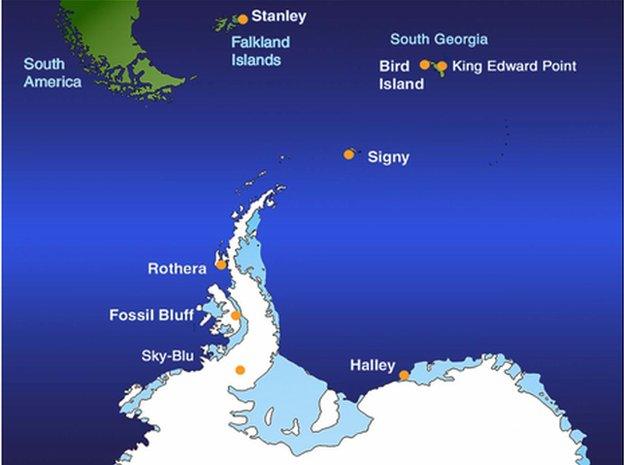
The British Antarctic Survey operates a number of research stations and supply facilities
In that first phone call, stories poured out of him about the landscapes, the isolation, the beauty, the 24-hour darkness in winter and 24-hour daylight in summer, the sense of adventure and the camaraderie. We talked for more than an hour.
Had he been back to Halley? I wondered. No, never. He'd floated the idea to BAS, but the logistical complexities seemed insurmountable.
Many discussions - and a couple of years - later, Peter and I, with a crew from BBC Two's Horizon programme, were standing on the bridge of the Ernest Shackleton about to become the first journalists to reach Halley for almost 20 years.

Peter Gibbs finds his land legs as the Shackleton is unloaded
It's hard to grasp how remote the place is. The Antarctic Peninsula, my destination when the Qatar trip flopped, is a cinch to get to by comparison - a short flight, or a couple of days at sea, and you're there. Halley is a different prospect.
You could fly in, but Halley's ski-way can accommodate only light aircraft - and such planes don't have the range to approach from the nearest commercial airports in southern Chile and South Africa. So you'd first have to fly by jet to the nearest decent runway, at the much bigger British Antarctic station, Rothera, or Russia's Novolazarevskaya.
From there you'd have to switch, probably, to a Twin Otter, for a day-long flight to Halley, with hazardous stops midway on the ice to refuel. Each plane carries survival supplies and polar camping gear, just in case. Capricious weather plays havoc with scheduling at every point. Cheap, it isn't.
The Shackleton's voyage from Cape Town took two weeks. If you look at a globe, that's an awful lot of blue to cross - it's not quite the whole length of Africa again, but pretty close. We saw no other vessels.

Find out more
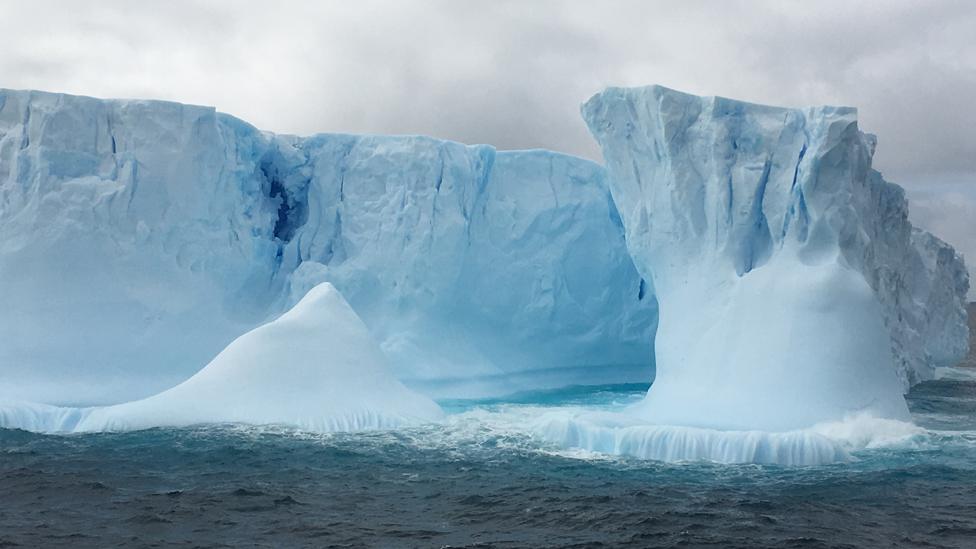
A passing iceberg
Back to the Ice, presented by Peter Gibbs and produced by Matthew Teller is on BBC Radio 4 on Sunday 6 March, at 13:30 GMT
You can catch up later on the BBC iPlayer

Late one night - it was 3am but the skies were bright as day - we passed Bouvet, a glaciated hump of rock that is the point of land furthest from any other point of land on the surface of the Earth.
Under its balaclava of freezing mist, this island hermit dared us to approach.
We didn't, crashing on through the ice floes of the Weddell Sea and eventually docking beside the Brunt Ice Shelf, a floating slab of ice several hundred metres thick in parts. It was then a three-hour journey by snowcat across the flattest, emptiest, whitest landscape of imagination to reach Halley.
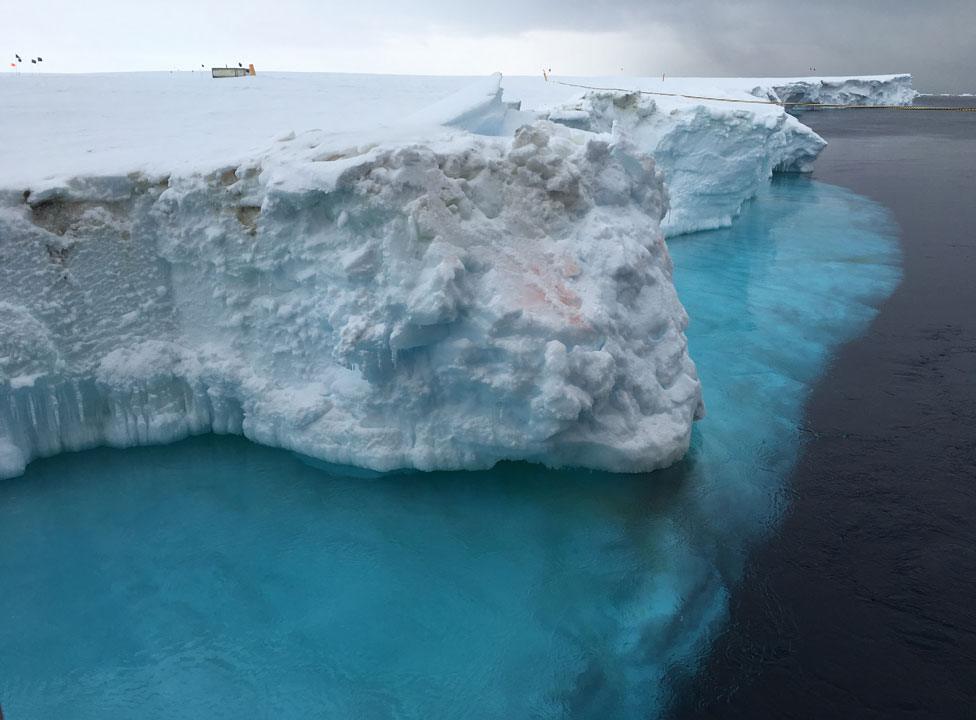
The Brunt Ice Shelf at its thinnest point where it meets the sea

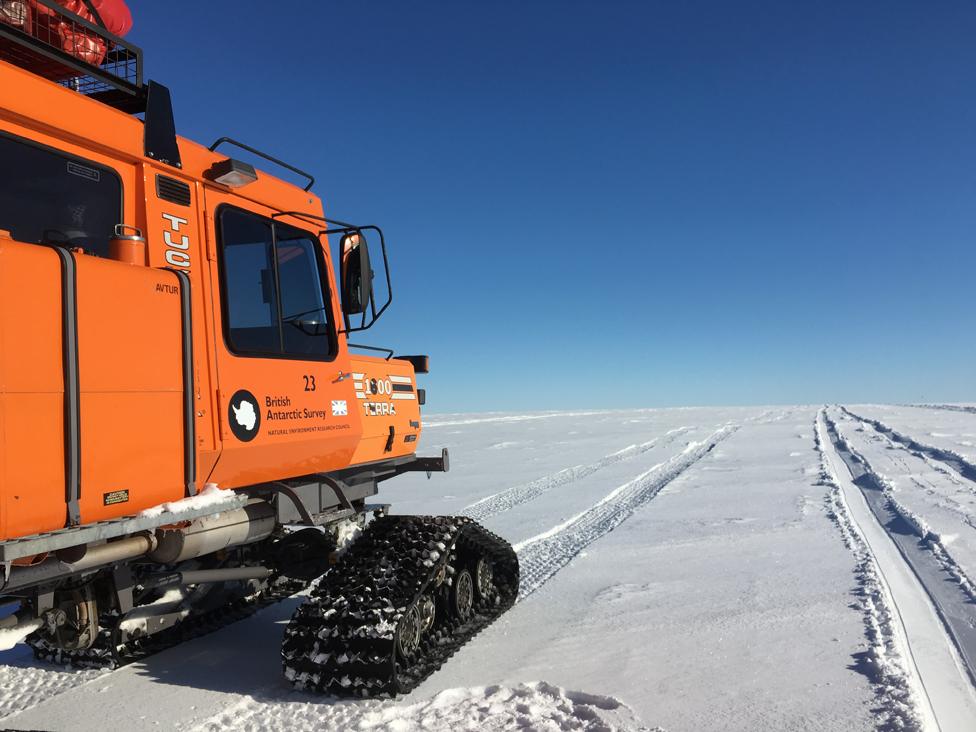
The snowcat on the ice shelf
Or, more properly, Halley VI. Halleys I to V are no more - smothered by snow, shunted westwards by the ice shelf, which moves about a metre and a half every day, and eventually dumped into the sea.
"Halley III, my base, was a few wooden huts inside giant steel tubes," says Peter Gibbs.
"By the time I arrived in 1980 the whole thing was already buried under 50ft of snow. It was like being in a submarine, clambering up and down ladders to get in and out of the base."
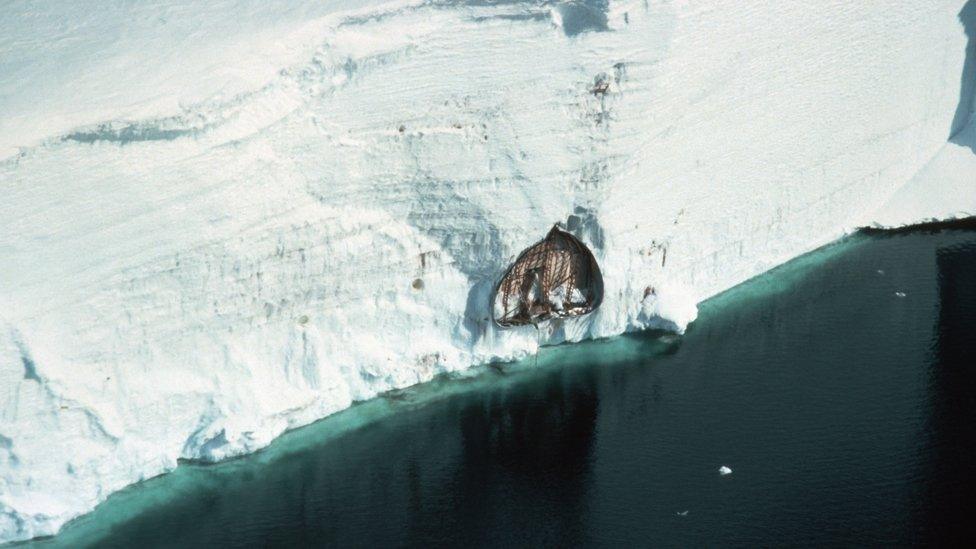
The remains of Halley III (photographed in 1993), crushed under the weight of snow and transported to the coast by the moving ice shelf
Halley matters. In a data-sparse area, it has recorded 60 unbroken years of weather observations - essential for detecting long-term climate trends.
It also sits under the point where the Earth's magnetic field lines curve into the pole, offering unique radar perspectives up into space, and its chemistry lab samples pollutants in the world's purest air, which sweeps in constantly from the vastnesses of the Antarctic interior.
So each time Halley has become uninhabitable, BAS has built a replacement - and Halley VI is a beauty, designed by architect Hugh Broughton as a chain of blue and red modules, jacked up on hydraulic legs above the snow, with bedrooms at one end, offices and social space in the middle, science labs at the other.

Mike Neaverson behind the wheel of a snow-clearing bulldozer at Halley
Each leg is fitted with a giant ski. When the time comes, the modules can be separated and dragged across the ice to a new location. Halley VI will last.
"It's a brilliant place to be spending the next year," says Jess Walkup, station leader for the forthcoming Antarctic winter season.
"I'm looking forward to the feeling once everybody leaves and there's just 13 of us here - that moment you look round and think, 'This is it: everything we need has to come from this group of people.'"
Most people at Halley aren't scientists. An army of mechanics, plumbers, electricians, carpenters and engineers arrives as soon as access becomes possible in November or December, working over the short summer to maintain the buildings.
Most of Halley's heavy-duty vehicle drivers are recruited from BAS adverts placed in Farmers Weekly magazine. Mike Neaverson, a farm manager, exchanged driving tractors in Goole for driving bulldozers at Halley, clearing snow accumulation around the station over the Antarctic summer.
And everything has to be shipped in. There are no cities in Antarctica, no roads or shops, no permanent population, nobody to summon if things go pear-shaped.
"In the middle of winter you might as well be on Mars," electrician Pete Smith told me.
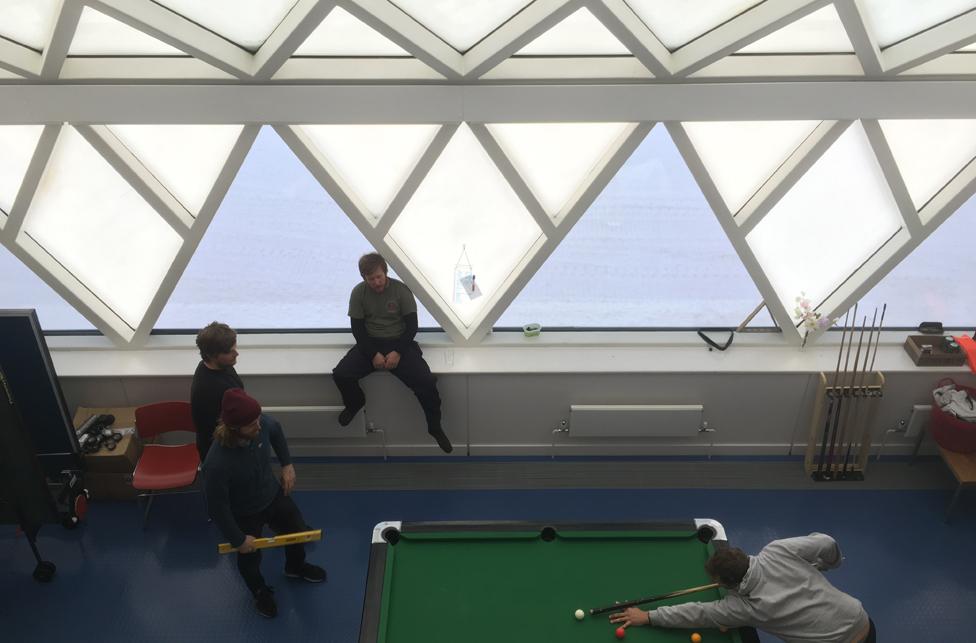
Inside Halley VI
It was rarely colder than about -15C (5F) during our stay - and we were lucky to have mostly light winds.
When the cloud lifted, everything sparkled. When it didn't, white light from a white sky met the white ground in a wall of nothingness, my eyes skating to and fro in a search for perspective. Yet sporting densely insulated overalls above layers of thermal fabric clothing, face protection and thick-soled polar boots, I was warm more often than cold.
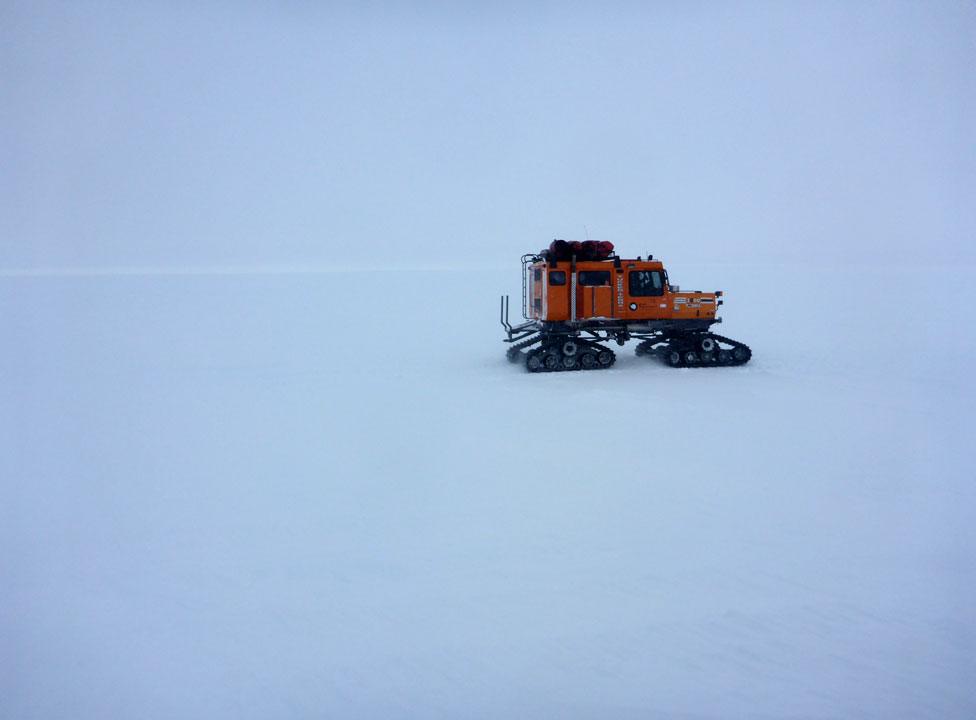
Spot the horizon: A cloudy day in Antarctica
But that's summer. The winter months feature total darkness, raging storms and temperatures below -50C (-58F). Except for phone contact and slow internet - the satellite connection is costly, and most bandwidth is reserved for science data - isolation is total.
It's no coincidence that the European Space Agency is running a long-term flight simulation experiment at Halley, testing volunteers' ability to retain knowledge of how to fly a Soyuz spacecraft on-screen during the long winter confinement.
"This is a hostile environment," says BAS physicist Richard Horne, visiting Halley VI for the first time when I was there.
"We rely on each other for our safety, and ultimately, for each person's survival down here. You've got to have a whole variety of people to support life on base so we can do the science."
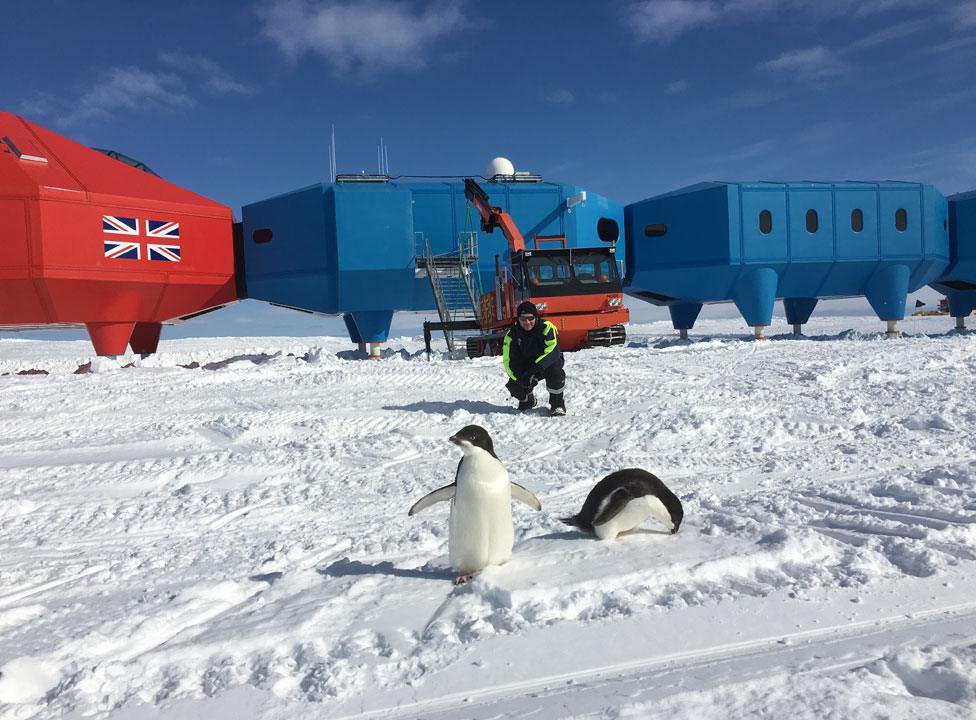
Peter Gibbs with a couple of Adelie penguins
For Peter, the camaraderie was familiar - but much had changed.
"To see this place for real, it's just incredible - the size, the scale of it. Such a far cry from anything I experienced first time around," he said.
"The comfort isn't just a lifestyle issue. As a viable, fully-functioning life support machine, Halley lets us fill the gaps in our Antarctic knowledge."
Back to the Ice, presented by Peter Gibbs and produced by Matthew Teller is on BBC Radio 4 on Sunday 6 March, at 13:30 GMT - catch up on BBC iPlayer Radio
Subscribe to the BBC News Magazine's email newsletter to get articles sent to your inbox.